Building a mountain bike from the frame up is one of the most rewarding experiences for any cycling enthusiast. The process allows complete customization and creates a machine that perfectly matches your riding style, local trails, and component preferences. The TRIFOX MFM200 Carbon MTB Hardtail Frame serves as an exceptional foundation for such a project, offering not only modern geometry and lightweight carbon construction but also remarkable versatility in wheel compatibility.
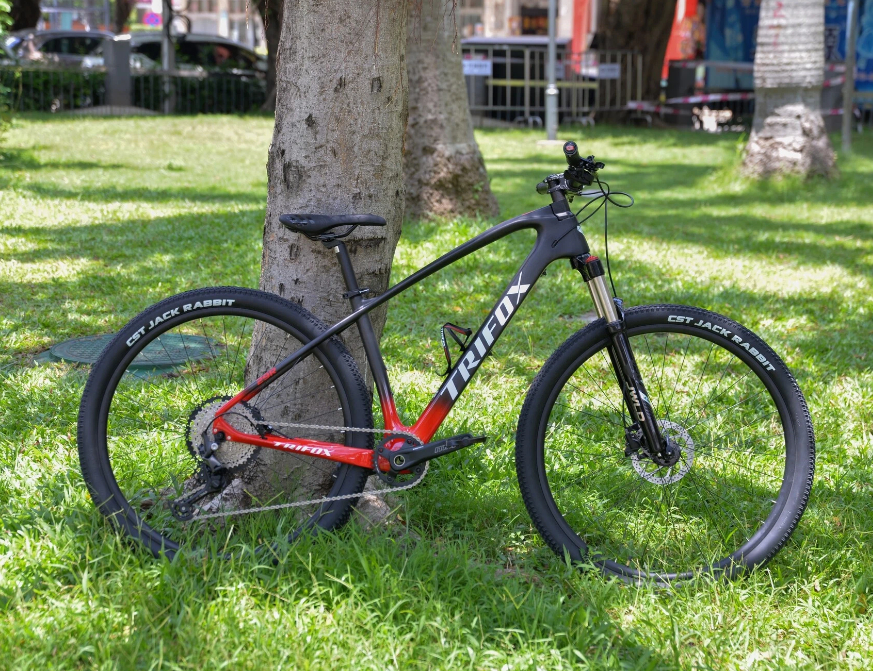
Choosing the Right Size: From 17 to 19 Inch Frame Options
The MFM200 is thoughtfully designed to accommodate riders of various heights, with popular 17 inch bike frame and 19 inch bike frame options. For many enthusiasts, the medium bike frame represents an optimal balance, making it a competent trail bike frame foundation for everything from fast cross-country to technical terrain.
Versatile Wheel Compatibility: Convertible Dropout System
A standout feature of the MFM200 is its innovative dropout system. The frame natively uses a robust 142mm thru-axle configuration for optimal stiffness and alignment. Crucially, by replacing the thru-axle dropout with an optional quick-release dropout, the frame seamlessly converts to a 135mm quick-release system. This convertible dropout design offers unparalleled flexibility, allowing you to choose between modern performance or legacy component compatibility for your trail bike build.
Frame Characteristics: Modern Performance Meets Timeless Design
While engineered with contemporary performance in mind, the MFM200 retains a clean, purposeful aesthetic that many consider a classic bike frame silhouette. Its full carbon construction delivers high stiffness-to-weight ratio and vibration damping. Internal cable routing contributes to a sleek appearance and protects components, making it a compelling centerpiece for a custom mtb.
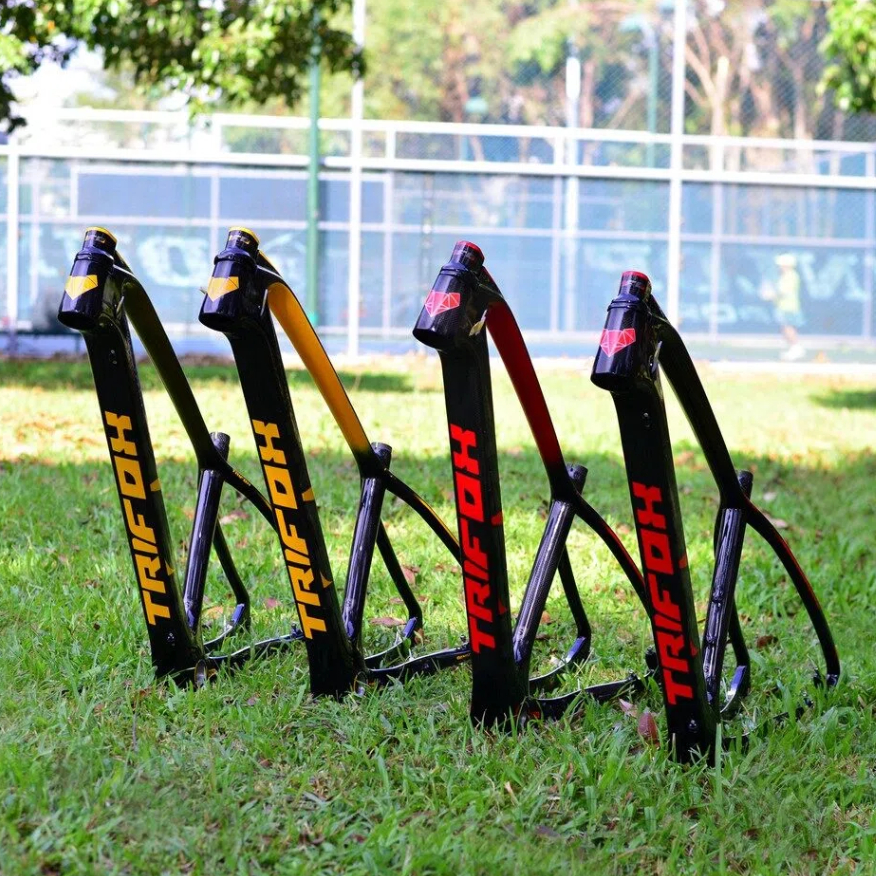
Building the Foundation: Drivetrain and Brakes
The frame is ideally suited for modern 1x drivetrains and features flat-mount disc brake tabs for clean integration with high-performance hydraulic systems. This modern braking standard offers consistent, powerful modulation in all conditions, a critical safety and performance upgrade for your mountain bike build.
Suspension Fork Selection & Cockpit Personalization
As a hardtail, selecting the right fork (120-150mm travel) is key to unlocking the frame's potential. Ensure it has a tapered steerer tube for optimal stiffness. The contact points—handlebar, stem, and saddle—are where the bike becomes uniquely yours. Strongly consider a dropper seatpost, which the frame's internal routing supports, for a major boost in descending confidence and control.
Conclusion: Your Vision, Realized
Building a bike around the TRIFOX MFM200 is an exercise in creation. From selecting the perfect frame size to utilizing its unique convertible dropout feature, every decision shapes a machine that reflects your priorities. Whether your goal is an XC racer or a trail explorer, the MFM200 provides a versatile, high-performance carbon foundation for your perfect thru-axle frame that can also adapt to quick-release compatible wheels.
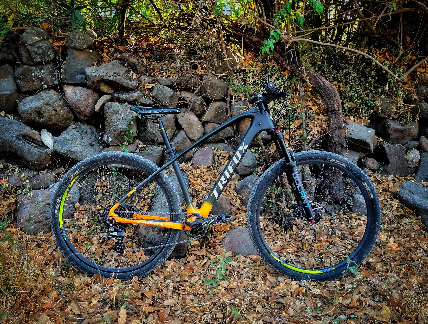

Building your dream mountain bike from the ground up is one of the most rewarding experiences for any cyclist. It allows for complete customization, ensuring every component is perfectly tailored to your riding style and local trails. If you're aiming for a modern, capable, and efficient 29er, starting with a high-quality carbon hardtail frame like the Trifox Carbon Hardtail Frame (SDY21) is the perfect foundation.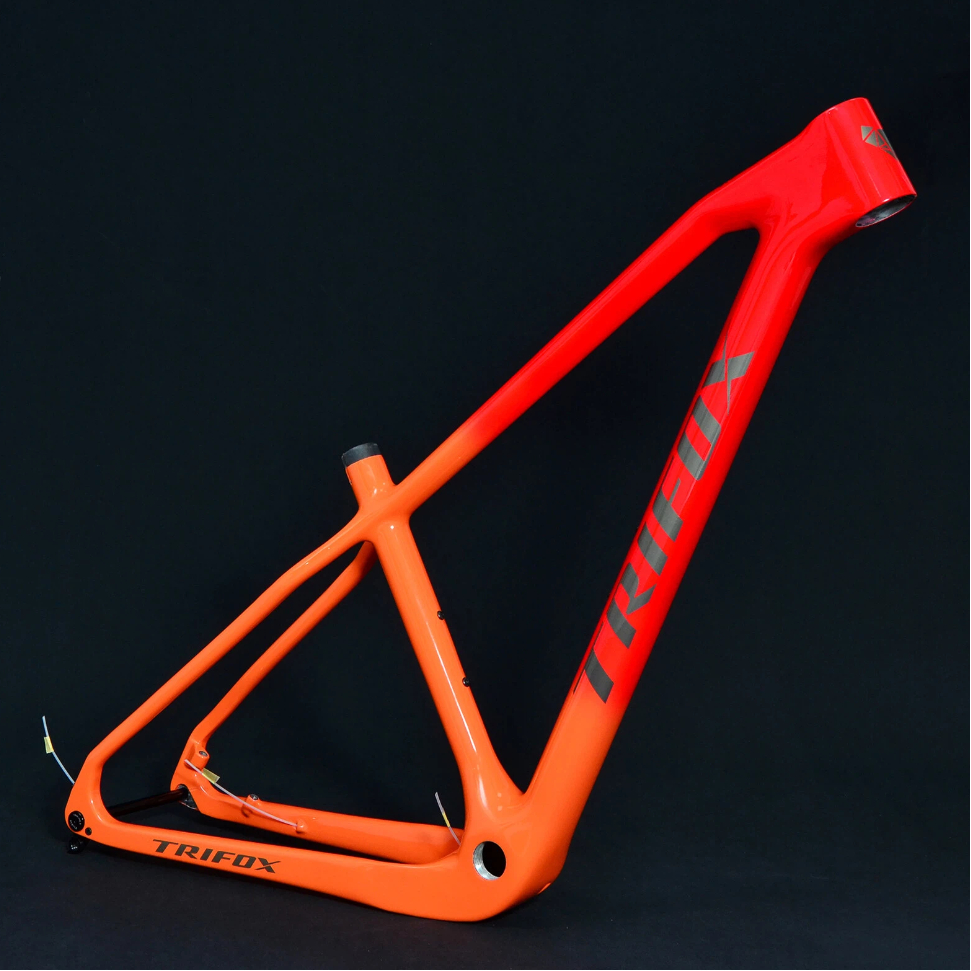
Step 1: The Heart of the Build - Choosing the Right Frame
The frame is the soul of your bike, dictating its geometry, ride quality, and component compatibility. For a dream 29er mountain bike, a carbon hardtail frame is an excellent choice. It offers an ideal blend of lightweight performance, stiffness for efficient power transfer, and inherent vibration damping for better comfort on rough trails. A frame like the Trifox SDY21 features modern standards like Boost spacing for stiffer wheels, a tapered head tube for enhanced steering precision, and internal cable routing for a clean appearance.
Step 2: Selecting the Wheelset and Drivetrain
The wheels are your bike's connection to the trail. For a 29er build, you benefit from superior rollover capability over obstacles, helping to maintain momentum. Pair your frame with a sturdy, yet lightweight, wheelset that matches the Boost hub spacing. For the drivetrain, the modern standard is a 1x (single front chainring) setup. It's simpler, lighter, and eliminates the risk of chain drops. Combine a narrow-wide chainring with a wide-range 12-speed cassette to give you all the gear range you need for any terrain.
Step 3: Dialing in Control with Suspension and Cockpit
Since you're building a hardtail mountain bike, your suspension comes entirely from the fork. A quality air-sprung fork with 120mm-130mm of travel is a versatile choice for most trail riding. Ensure it has a tapered steerer to match your frame's head tube for optimal stiffness. Your cockpit—the handlebar, stem, and seatpost—is your control center. A 35mm diameter handlebar and stem combo offers robust stiffness, while a dropper post is a game-changing upgrade for confident descending on your custom 29er build.
Step 4: Ensuring Stopping Power and Finishing Touches
Modern trails demand powerful brakes. Hydraulic disc brakes are essential, and the frame provides post-mount compatibility for a clean installation. Choose rotor sizes that match your aggression and trail demands. Finally, select the finishing kit: a comfortable saddle, reliable pedals (flat or clipless), and durable tires that suit your typical terrain. These components personalize the bike and complete your MTB project build.
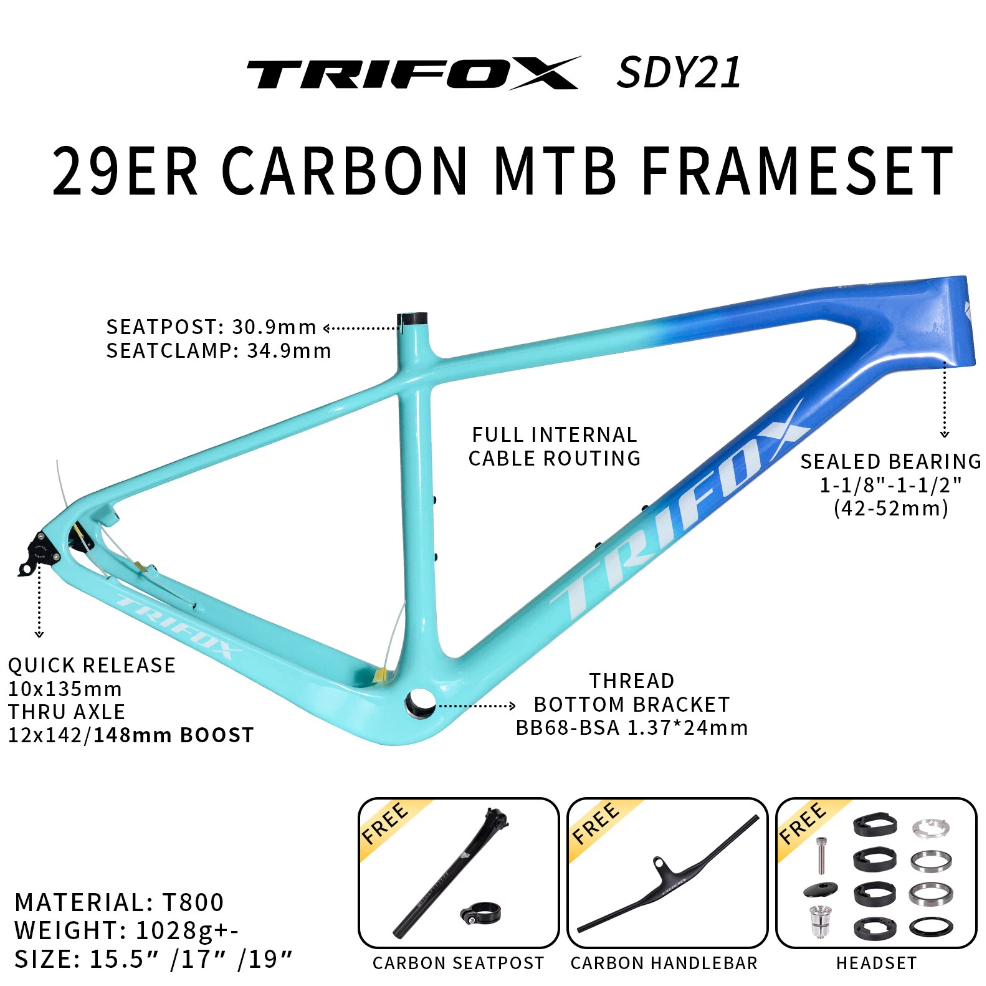
Why the Trifox SDY21 Frame is the Ideal Foundation
Building around a carbon 29er frame like the Trifox SDY21 sets your dream build up for success. Its full carbon fiber construction provides the perfect blend of low weight, vibration damping, and pedaling efficiency. The internal cable routing creates a clean, snag-free appearance and protects the cables from the elements. This frame is designed for the rider who appreciates a direct, engaging trail feel and wants a bike that is both a capable climber and a fun, agile descender.
Your Dream 29er Awaits
Building a bike around a carbon hardtail frame is a deeply personal and satisfying process. You gain an intimate understanding of your machine and create a ride that is uniquely yours. By carefully selecting each component to match this high-quality frame, you will craft a lightweight hardtail mountain bike that is ready to conquer trails and provide endless smiles for years to come. Start your build journey today and experience the ultimate in customization and performance.

Discover the Trifox SDY20 carbon MTB frame. This lightweight 29er hardtail frame combines a stiff, efficient carbon layup with the modern SRAM Universal Derailleur Hanger (UDH) for unparalleled performance and compatibility. Perfect for XC and trail riders.
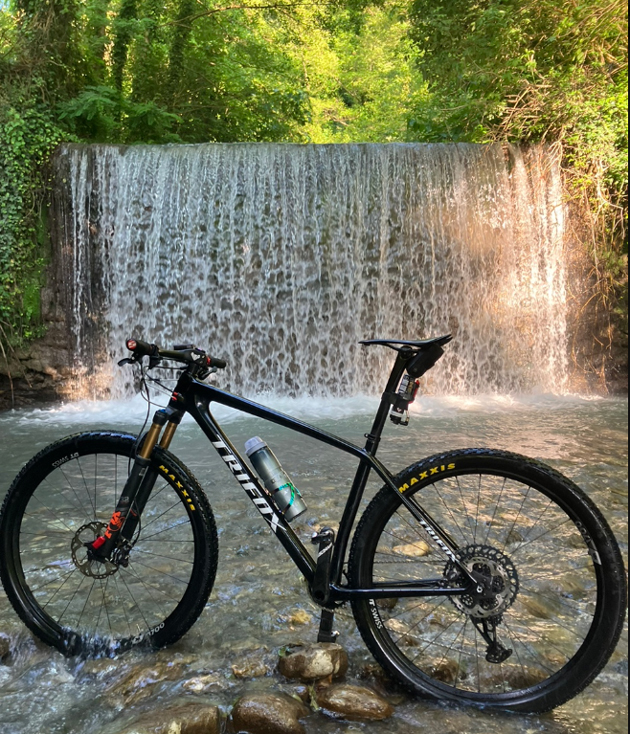
The Quest for the Perfect Hardtail
In the world of mountain biking, the hardtail holds a special place. It’s a pure, direct connection between rider and trail, rewarding skill and fitness with unmatched efficiency. But not all hardtails are created equal. The modern rider demands a frame that is not only stiff and lightweight but also future-proof, ready to accept the latest components without compromise.
Enter the Trifox SDY20 Carbon MTB Hardtail Frame. This frame is engineered from the ground up to meet these exact demands. By fusing a high-performance carbon fiber 29er design with the game-changing SRAM Universal Derailleur Hanger (UDH), the SDY20 isn't just another frame—it's a smart, long-term investment for discerning riders.
A Deep Dive into the SDY20's Carbon ChassisAt the heart of any great frame is its material and construction. The SDY20 is meticulously crafted from unidirectional carbon fiber, a process that places each strand of carbon in a specific direction to optimize strength and stiffness where it's needed most.
Unmatched Stiffness: The primary benefit of this advanced carbon layup is phenomenal power transfer. When you put power into the pedals, the SDY20 translates it directly into forward motion with minimal flex. This results in explosive acceleration and climbing efficiency that will make you feel stronger on every ride.
Feather-Light Weight: Carbon fiber's incredible strength-to-weight ratio means the SDY20 frame is remarkably light. Shedding weight from the frame, the largest single component of your bike, has a dramatic effect on overall ride feel, making the bike more agile and easier to handle, especially on technical climbs..
29er Performance: The frame is designed exclusively for 29-inch wheels, the current gold standard for mountain biking. Larger wheels roll over obstacles with greater ease, maintain momentum better, and provide increased traction and confidence through rough sections. The SDY20’s geometry is optimized to harness all the benefits of the 29er platform.
The Game-Changing Upgrade: Why the UDH MattersThis is where the Trifox SDY20 truly separates itself from the pack. The inclusion of the SRAM Universal Derailleur Hanger (UDH) is more than a minor spec update; it's a fundamental shift in compatibility and durability.
Universal Compatibility: As the name suggests, the UDH is an industry-standard hanger. It’s designed to work with an enormous range of derailleurs, most notably SRAM's current and future Eagle Transmission (AXS) groupsets. This means your SDY20 frame is ready for the latest wireless shifting technology right out of the box. No more searching for proprietary, model-specific hangers.
Enhanced Durability & Protection: The UDH is designed to be a sacrificial component. In the event of an impact to your rear derailleur, the UDH is engineered to break before the much more expensive derailleur or frame does. This simple, smart design can save you hundreds of dollars in repairs and is a critical feature for any mountain bike that sees real trail use.
Future-Proofing Your Investment: By building your bike around a frame with a UDH, you are ensuring that it will be compatible with the vast majority of drivetrain upgrades for years to come. The UDH is quickly becoming the new norm, and the SDY20 puts you on the right side of that evolution.:
Built for Modern Standards: More Than Just UDHThe forward-thinking design of the SDY20 extends beyond the derailleur hanger. This frame is built to accommodate the best modern components.
Boost Spacing (148x12mm Thru-Axle): Boost hub spacing increases wheel stiffness and strength, providing better alignment for wider tires and improving handling precision.
Modern Geometry: The frame features a contemporary geometry that strikes a perfect balance for XC and trail riding. It provides a confident, stable stance on descents while remaining agile and responsive for climbing and technical maneuvers.
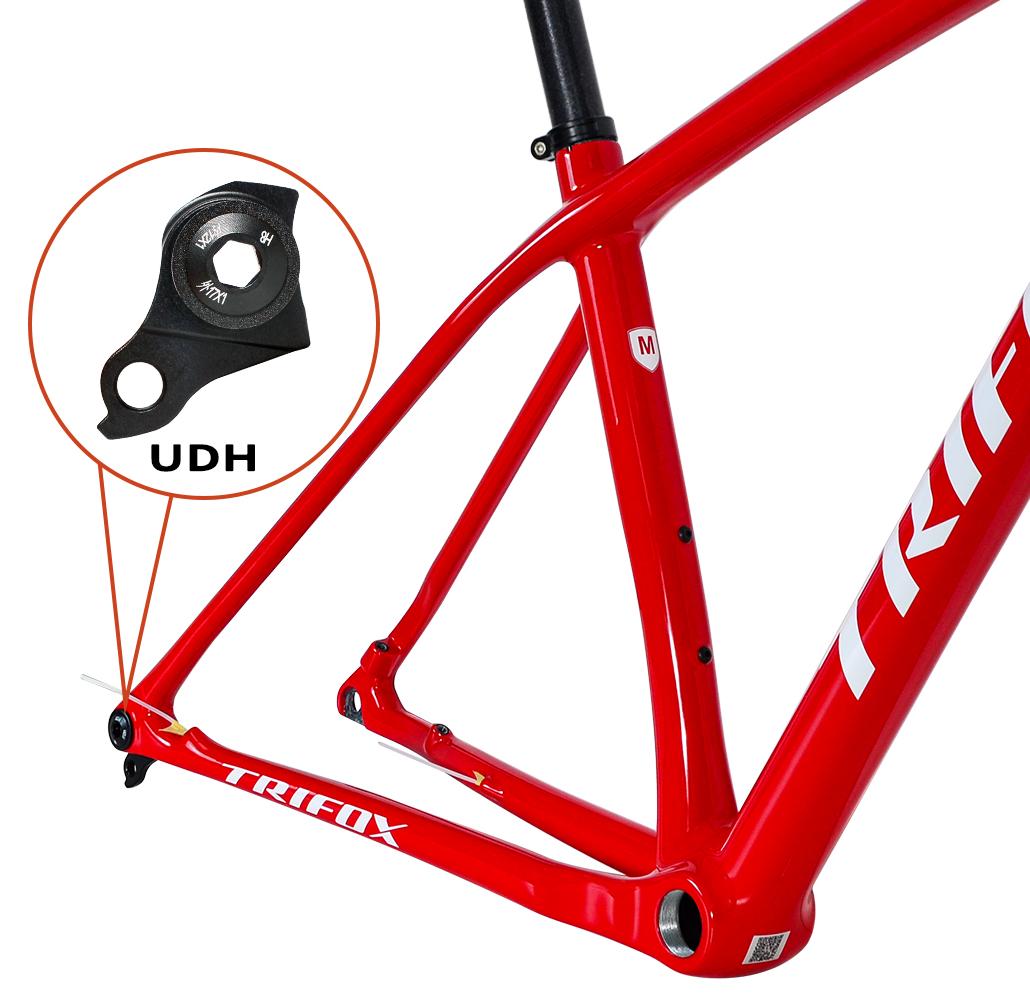
Who Is The Trifox SDY20 Carbon Frame For?
This frame is the ideal foundation for:
The Weight-Conscious Racer: Looking for every possible advantage in stiffness and weight savings.
The Trail Enthusiast: Wants a lively, efficient, and modern hardtail that can tackle a variety of terrain with confidence.
The Tech-Savvy Builder: Planning a custom build and wants a frame that is compatible with the latest and greatest components, including wireless groupsets.
The Upgrader: Seeking to move from an older aluminum frame to a high-performance carbon platform without sacrificing future compatibility.
A Frame Ready for Tomorrow's TrailsThe Trifox SDY20 Carbon MTB Hardtail Frame is a masterclass in modern bicycle design. It doesn't force you to choose between a stiff, lightweight carbon chassis and future-proof compatibility. It delivers both in one elegant package.
By combining the race-winning performance of its 29er carbon frame with the industry-standard SRAM UDH upgrade, the SDY20 offers a compelling value proposition. It’s a frame that feels incredible to ride today and is smartly equipped for the innovations of tomorrow.
Ready to build your dream hardtail? Explore the Trifox SDY20 Carbon Frame and discover the perfect balance of weight, stiffness, and modern technology.
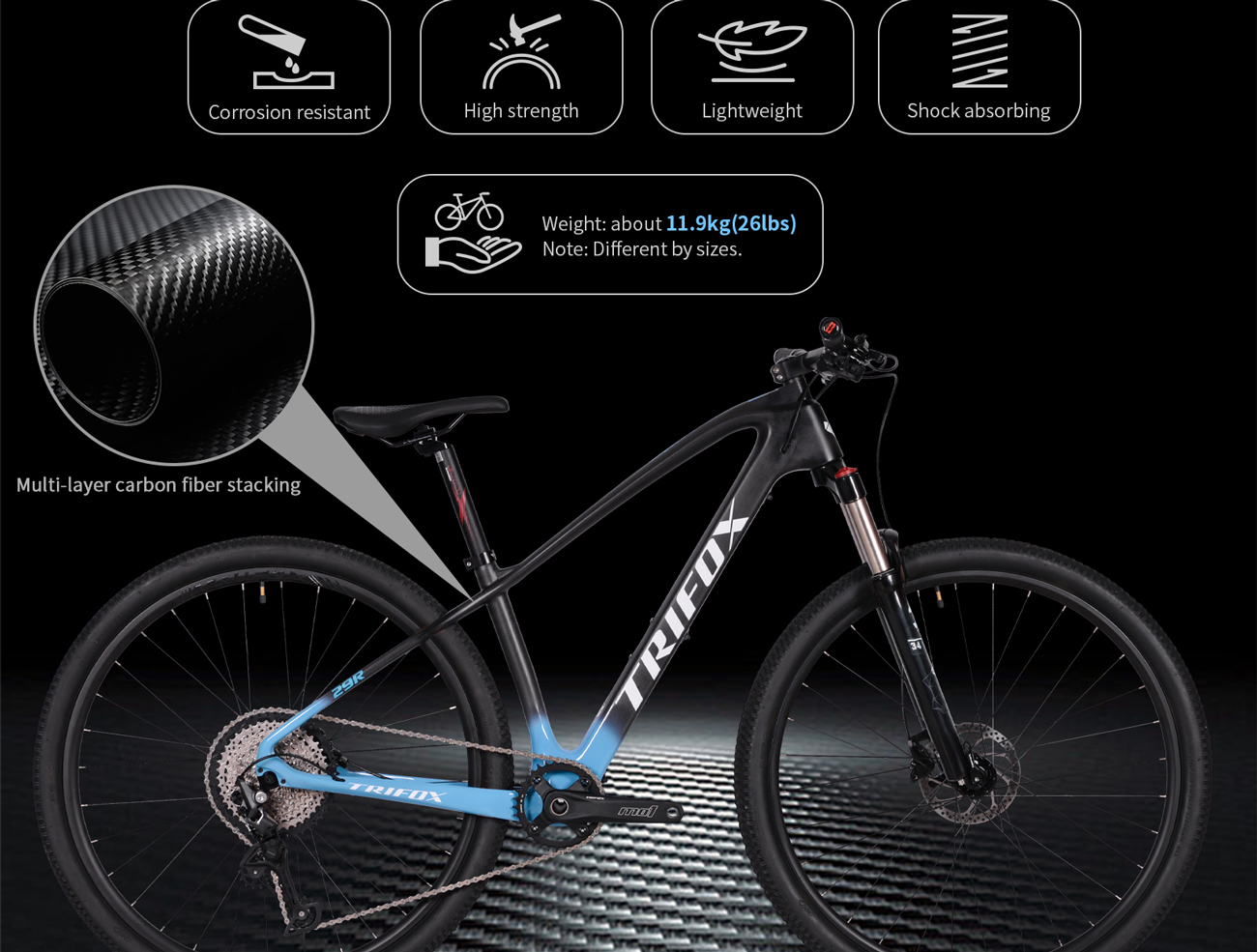
Think building a capable, lightweight hardtail requires breaking the bank? Think again. The sub-$250 frame market is hotter than ever, offering surprising performance for riders seeking value without sacrificing fun. We scrutinized options, and one standout shines: the Trifox MFM200 Carbon Hardtail Frame. Here’s why it’s a budget hero:
The Carbon Game-Changer (Yes, at $227!)
The MFM200 shatters expectations by delivering a full carbon fiber frame at an astonishing price point. Forget heavy steel or flexy aluminum – this frame offers the core benefits of carbon:
Ultralight Build: Weighing in around 1200g (size dependent), it sheds serious pounds compared to alloy frames at this price. That translates directly to easier climbing and a livelier, more responsive feel on every trail.
Stiffness for Speed: Carbon construction ensures excellent pedaling efficiency. Power transfer is direct, minimizing wasted energy when you stomp on the pedals, whether sprinting or grinding uphill.
Tuned Trail Compliance: While stiff laterally, carbon can offer subtle vertical flex. The MFM200’s design helps absorb smaller bumps and chatter, reducing fatigue on longer rides and rough sections, making it more capable than its price suggests.
Modern Geometry for Real Trails
Trifox didn't skimp on contemporary design:
Slack Head Tube Angle (~66-67°): Boosts confidence on descents, improving stability when things get steep or rough.
Steep Seat Tube Angle (~74-75°): Positions you efficiently over the pedals for better climbing traction and comfort.
Reach & Wheelbase: Balanced numbers provide a stable yet maneuverable ride suitable for aggressive trail riding and XC adventures.
Smart Build Compatibility
The MFM200 plays nice with widely available, affordable components:
Boost Hub Spacing (148x12mm rear): Ensures stiffness and compatibility with modern wheelsets.
Internal Cable Routing: Clean looks and protection for dropper posts and derailleurs.
Tapered Headtube: Fits modern, stiff forks for precise steering.
Threaded Bottom Bracket: A huge win for reliability and ease of maintenance – no creaky press-fits!
Value Verdict: The Trifox MFM200
Finding a new carbon frame under $230 feels almost unreal. The Trifox MFM200 delivers the core advantages of carbon – significant weight savings, efficient power transfer, and surprisingly good trail manners – wrapped in modern, capable geometry. While you might find minor finish differences compared to premium frames, the fundamental performance is undeniable.
Is it perfect? Consider:
Finish: Expect functional over flawless – cosmetics might be simpler.
Hardware: Bearings and bolts are adequate, but upgrading later is easy.
Build Cost: Remember, the frame is just the start! Factor in fork, drivetrain, wheels, etc.
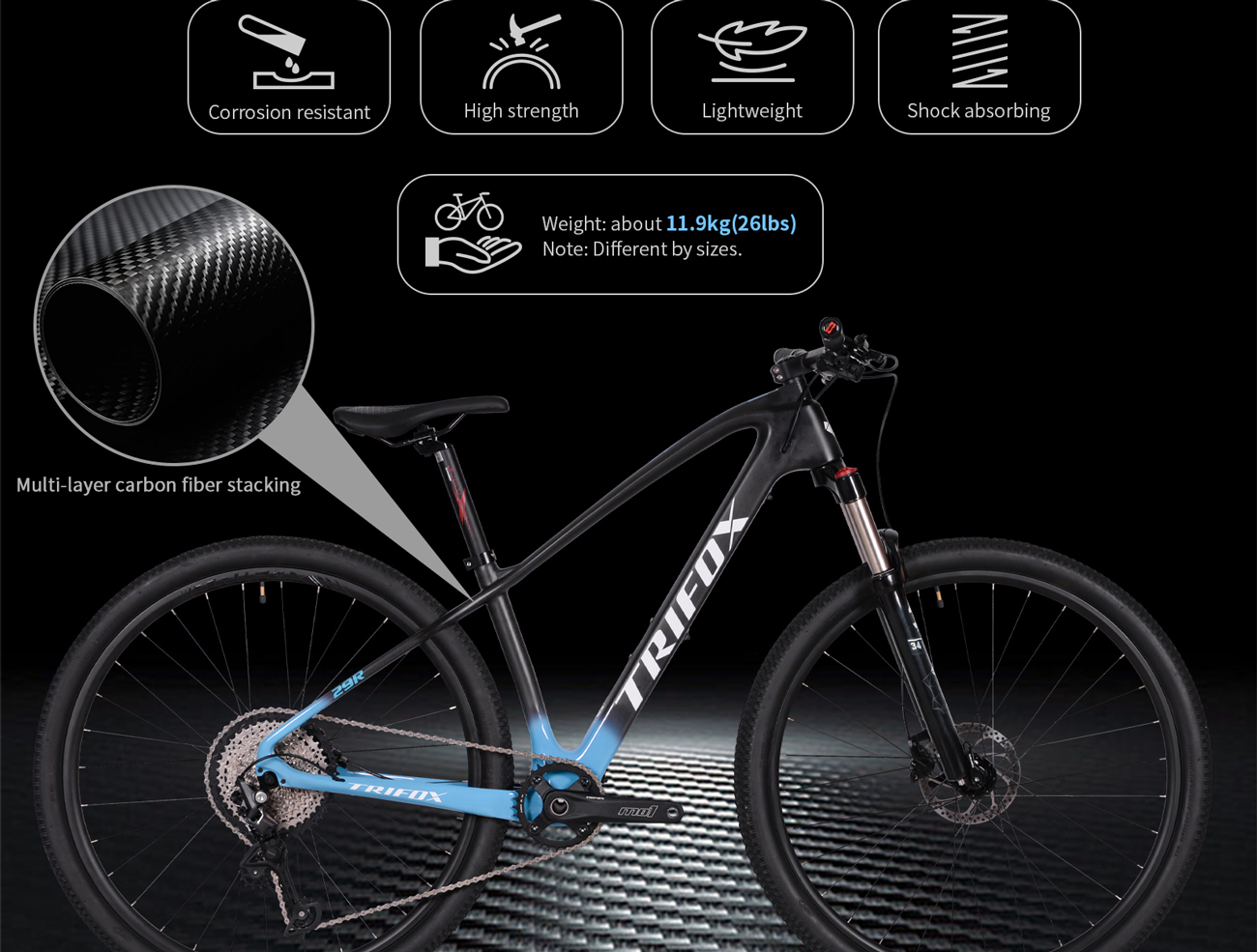
The Bottom Line:
For riders demanding a lightweight, efficient, and modern hardtail platform without blowing the budget, the Trifox MFM200 is a revelation. It proves you don't need $1000+ to get a frame that unlocks hardtail heroics. Pair it with smart component choices, and you’ve got a trail-taming machine that punches way above its weight class. Budget hardtails just leveled up!

Remember when carbon fiber was reserved for pro pelotons and deep-pocketed racers? Not anymore. Mountain biking is witnessing the unstoppable rise of carbon, transforming trails from XC loops to gnarly enduro descents. Brands like Trifox are making this once-exotic material accessible, proving carbon MTBs aren't just lighter – they're better riding machines. Here's why the shift is seismic:
Featherweight Flight: This is the headline. Carbon frames slash pounds off alloy counterparts. Less weight means easier climbing, quicker acceleration, and less fatigue over long days. You carry the bike less; the bike carries you more. Trifox's carbon hardtails and full-suspension rigs exemplify this advantage, turning arduous ascents into achievable efforts.
Stiffness Meets Sensation: Carbon isn't just light; it's incredibly tuneable. Engineers craft frames with targeted stiffness where it matters most: the bottom bracket for efficient pedaling, the head tube for precise steering. Yet, carbon's magic lies in its ability to also offer vertical compliance. It absorbs smaller trail chatter better than alloy, reducing arm and leg fatigue, letting you ride harder, longer.
Strength You Can Trust: Forget the "fragile" myth. Modern carbon layups create structures incredibly resistant to impacts and fatigue. When designed correctly (like Trifox's robust mountain frames), carbon handles rock strikes, drops, and rough terrain with impressive resilience. It won't dent like aluminum and shrugs off corrosion.
Ride Refined: The combination of lightness, stiffness, and subtle flex translates to a more connected, responsive, and lively feel. You feel the trail without being beaten by it. Carbon bikes track better through corners, feel more nimble in the air, and offer a directness that boosts confidence when pushing limits.

Trifox: Bringing Carbon to the Trail
Brands like Trifox are crucial to this rise. By leveraging efficient manufacturing and direct-to-consumer models, they deliver high-performance carbon mountain bikes at astonishingly competitive prices. Whether it's their agile carbon hardtails perfect for XC and trail blasting, or their capable full-suspension platforms, Trifox proves you don't need a pro contract to experience the carbon revolution.
The Verdict: Not Just a Trend, The Future
The rise of carbon fiber in mountain biking isn't just hype; it's a fundamental shift driven by tangible performance benefits. It offers a superior blend of weight, strength, stiffness, and ride quality that alloy struggles to match. As manufacturing advances and brands like Trifox make it more accessible, carbon is becoming the material of choice for riders seeking every advantage on the trail. It’s not about replacing alloy entirely, but about offering a compelling, high-performance option that’s redefining what’s possible on two wheels. Ready to feel the difference? Explore the carbon evolution: Discover Trifox Mountain Bikes.
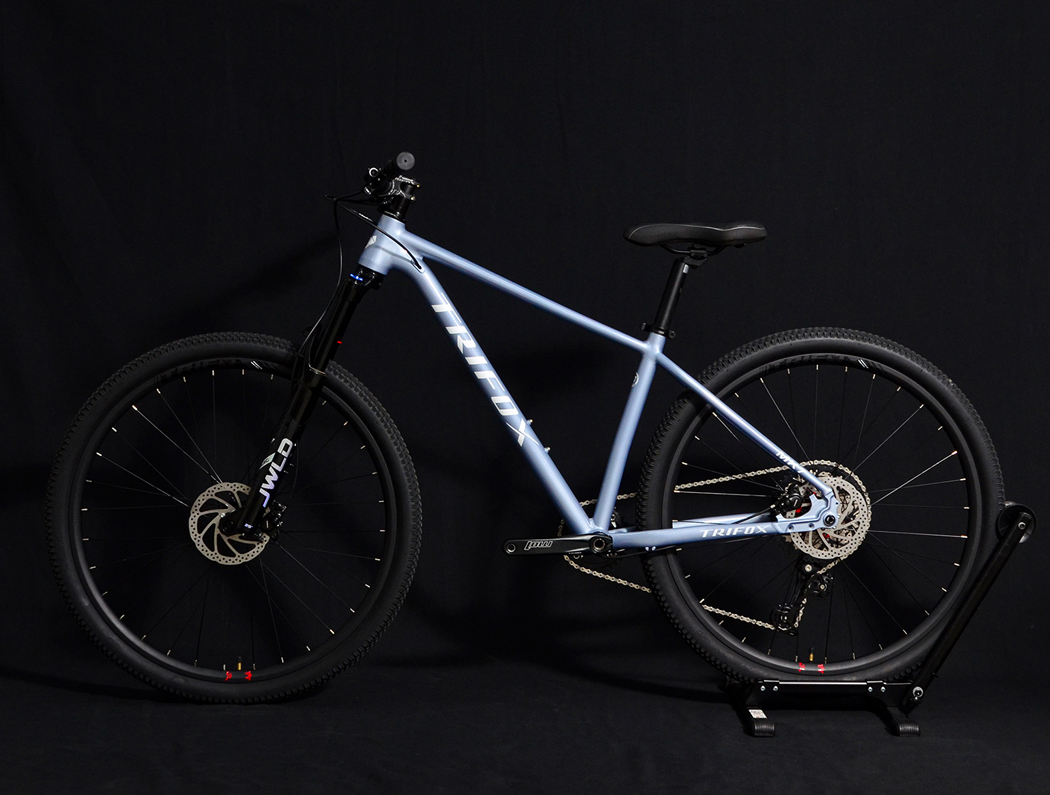
In an era of complex full-suspension rigs, the aluminium hardtail mountain bike holds a special, enduring appeal. It’s not about nostalgia; it’s about a distinct, exhilarating riding experience defined by purity, efficiency, and a direct connection to the trail that modern aluminium frames elevate perfectly.
Why Choose the Aluminium Hardtail?
- Unbeatable Efficiency: Every watt of your pedal power translates directly into forward motion. Aluminium frames offer fantastic stiffness, ensuring minimal energy loss. You feel faster, especially on climbs and flowing singletrack where acceleration is key.
- Trail Telepathy: Without rear suspension, you feel every root, rock, and contour. This direct feedback sharpens your skills, improves your line choice, and creates an incredibly immersive, connected ride. You learn to flow with the trail, not just float over it.
- Lively & Playful: Modern aluminium frames are surprisingly compliant, offering a lively, responsive feel. The hardtail design encourages popping off features, manualing, and flicking the bike around with agility – pure, unadulterated fun.
- Robust & Reliable: Aluminium is tough. It shrugs off rock strikes and minor crashes. Combine that with the inherent simplicity of a hardtail (fewer pivots, less maintenance), and you have a bike built for relentless trail duty and adventure, season after season.
- Incredible Value: You get serious performance and durability without the high cost and maintenance of rear suspension. This frees up budget for higher-quality components elsewhere.
The Modern Aluminium Hardtail: Evolved & Capable
The Trifox PeakTrail Xtreme MK7 exemplifies this allure. It’s not your grandad's rigid bike. Featuring:
- A lightweight, hydroformed aluminium frame with optimized tubing for strength and ride quality.
- Aggressive, modern geometry for confident descending and stability at speed.
- Premium suspension fork (like the Suntour Raidon) to smooth out the front end.
- High-performance drivetrain (Shimano SLX/XT) and powerful disc brakes for precise control.
Who Thrives on a Hardtail?
- Skill Builders: Learn proper technique and become a better rider.
- XC & Trail Racers: Maximize speed and efficiency.
- Value Seekers: Get top-tier performance without breaking the bank.
- Adventure Riders: Dependable, low-maintenance exploration machines.
- Riders Craving Connection: Those who want to truly feel the trail beneath them.
Ready to Embrace the Purity?
Experience the direct thrill and undeniable efficiency of a modern aluminium hardtail. The Trifox PeakTrail Xtreme MK7 delivers the perfect blend of performance, durability, and pure trail feedback. Rediscover why the hardtail remains a cornerstone of mountain biking.
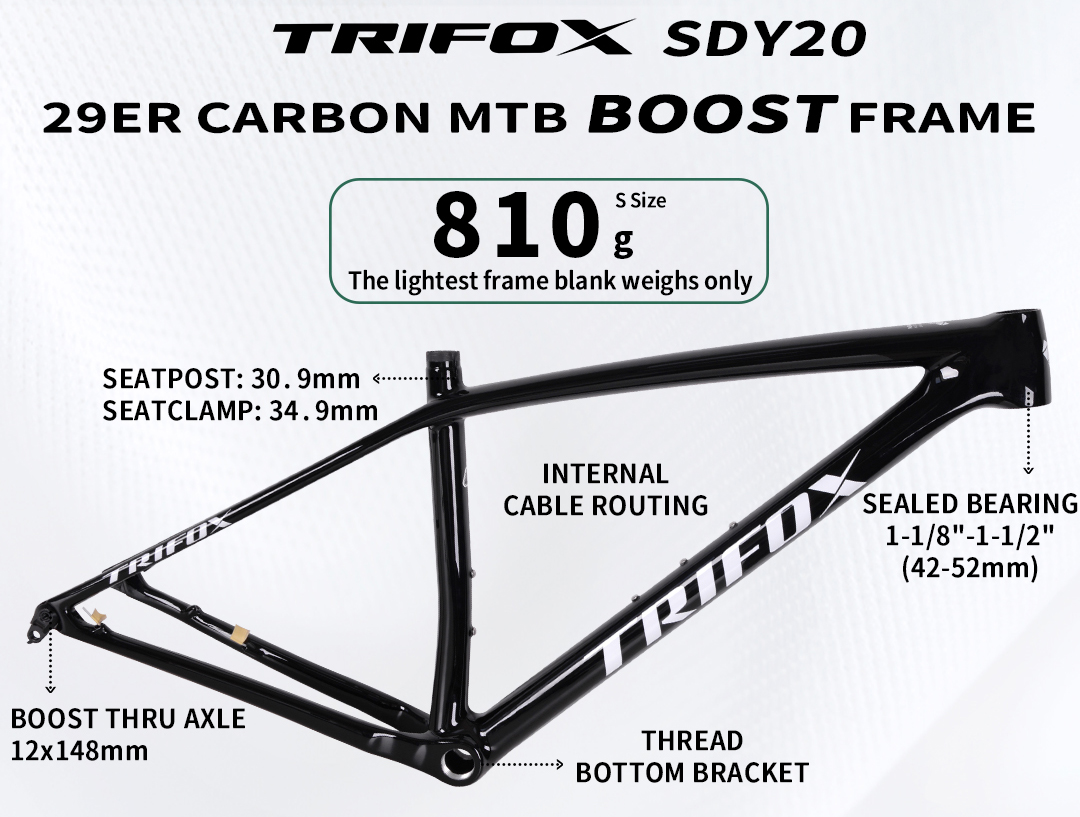
In mountain biking, weight is gravity’s currency. For racers and climb-obsessed riders, every gram shaved unlocks speed, agility, and that precious edge over rivals. At Trifox, this obsession birthed the SDY20 hardtail frame – their lightest 29er carbon chassis ever, engineered to turn ascents into triumphs.
The Magic Number: 930g
Weighing just 930 grams (size S, unpainted), the SDY20 isn’t just light – it’s a feat of carbon optimization. Using T1000 carbon with refined layering, Trifox achieves staggering stiffness-to-weight while maintaining trail-taming compliance. This frame isn’t delicate; it’s intelligently minimal.
Why Lighter = Faster?
- Acceleration: Less mass to propel uphill = instant response when you stamp the pedals.
- Agility: Flickable on switchbacks and effortless to loft over roots.
- Endurance: Reduced fatigue = more watts left for the final kick.
Race-Ready DNA Beyond Weight:
- XC Geometry: A 68.5° head angle and 445mm reach balance stability and razor-sharp precision.
- Boost Spacing: 148x12mm rear / 110x15mm front maximize stiffness and wheel compatibility.
- Stealth Integration: Full internal routing (brakes + dropper) for clean looks and snag-free rock gardens.
Modern Trail Specs: 1x-only, tapered head tube, and room for 2.4" tires.
Who Is the SDY20 For?
- XC Racers: Chase podiums with a frame born for efficiency.
- Climb Conquerors: Transform suffering into flow.
- Weight Weenies: The ultimate gram-shavers'canvas.
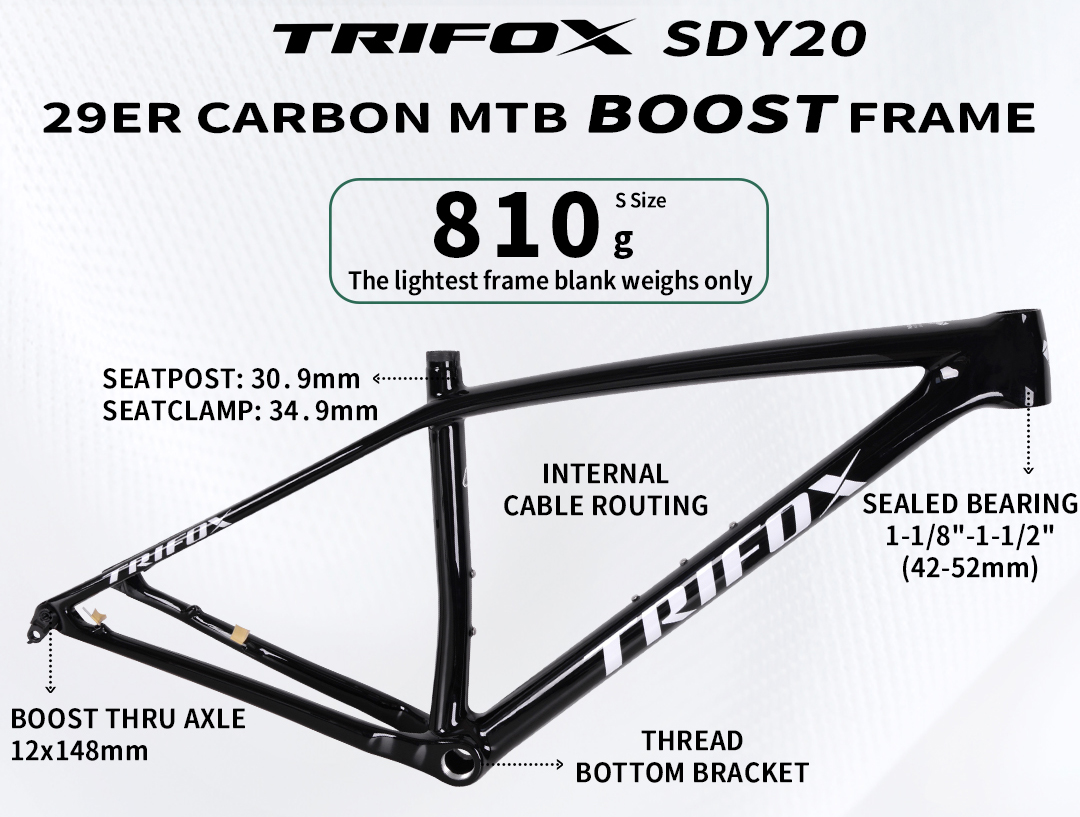
The Verdict:
The SDY20 isn't just a frame – it's Trifox's love letter to climbing. By ruthlessly cutting grams without sacrificing stiffness or control, it delivers a ride experience where the bike disappears beneath you, leaving only you, the trail, and the summit ahead.
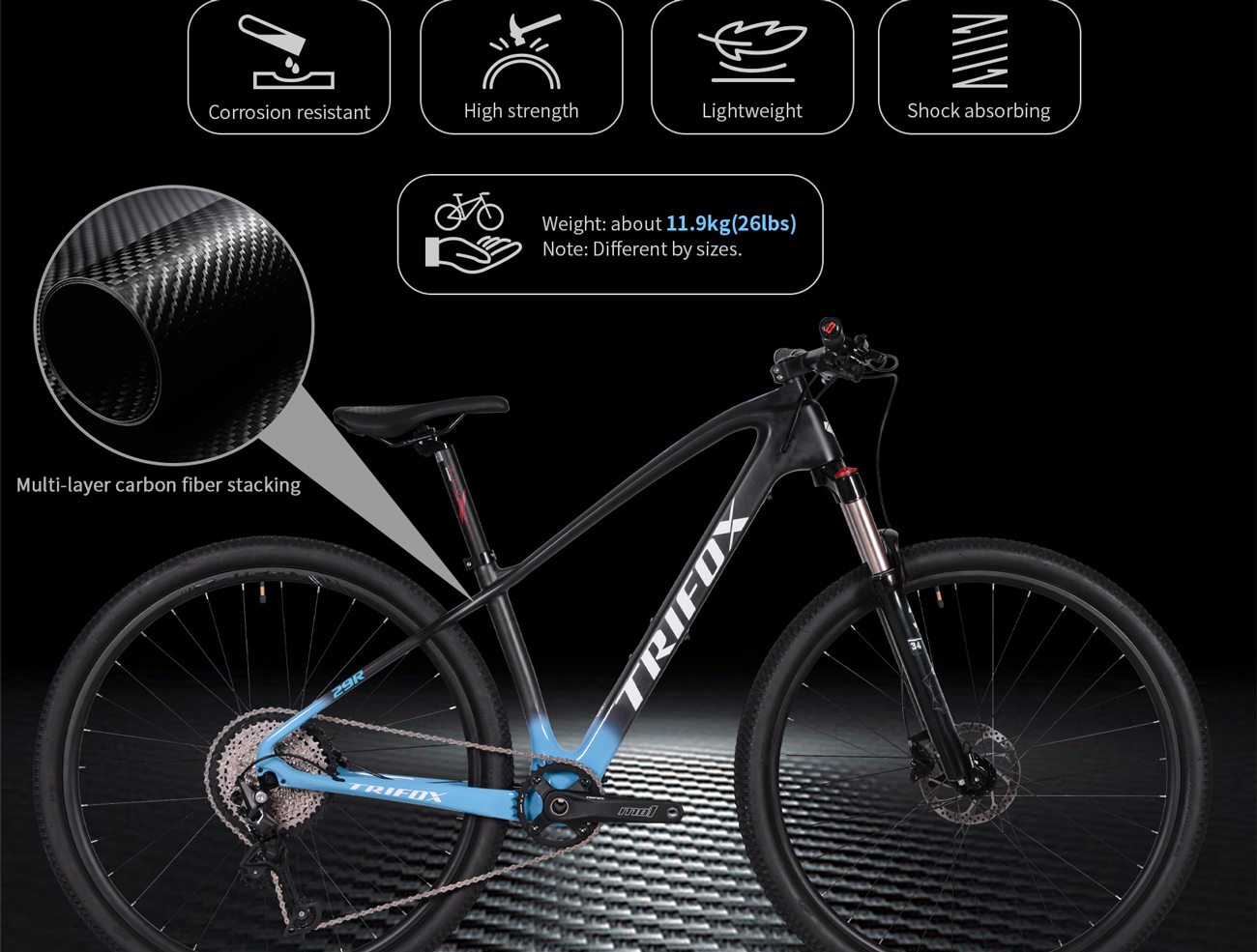
You see "T800 carbon" touted in bike specs, often positioned between "entry-level" T700 and premium "high-modulus" (like T1000+). But what does it actually mean, and is it good?
Here's the breakdown:
1. What "T800" Means: It refers to the tensile modulus of the carbon fiber strands (measured in Gigapascals - GPa). T800 fiber has a higher modulus (stiffer) than T700, but lower than ultra-high-modulus fibers like T1000 or T1100. Higher modulus generally means stiffer and stronger fibers for their weight.
2. The Benefits:
Improved Stiffness-to-Weight Ratio: Compared to T700, T800 allows frame designers to use less material to achieve the same stiffness, or make a frame stiffer at the same weight. This translates to better power transfer and responsiveness.
Good Strength: T800 offers excellent strength, crucial for durability and impact resistance.
Balanced Performance: It hits a sweet spot between the relative affordability/forgiveness of T700 and the extreme stiffness (and often higher cost/brittleness potential) of higher modulus fibers.
3. The Reality Check:
Layup is KING: The raw fiber grade is only part of the story. How the fibers are oriented, woven, layered (the "layup"), and bonded with resin determines the frame's final ride quality, strength, weight, and compliance. A genius layup with T700 can outperform a poor one with T800.
Not All T800 is Equal: Quality control in fiber production and frame manufacturing is paramount. Reputable brands ensure consistency; cheap frames might use "T800" but with questionable processes.
Higher Modulus ≠ Always Better: Ultra-high-modulus fibers (T1000+) can be too stiff, leading to a harsh ride. T800 often provides a better balance of stiffness and some vertical compliance (comfort).
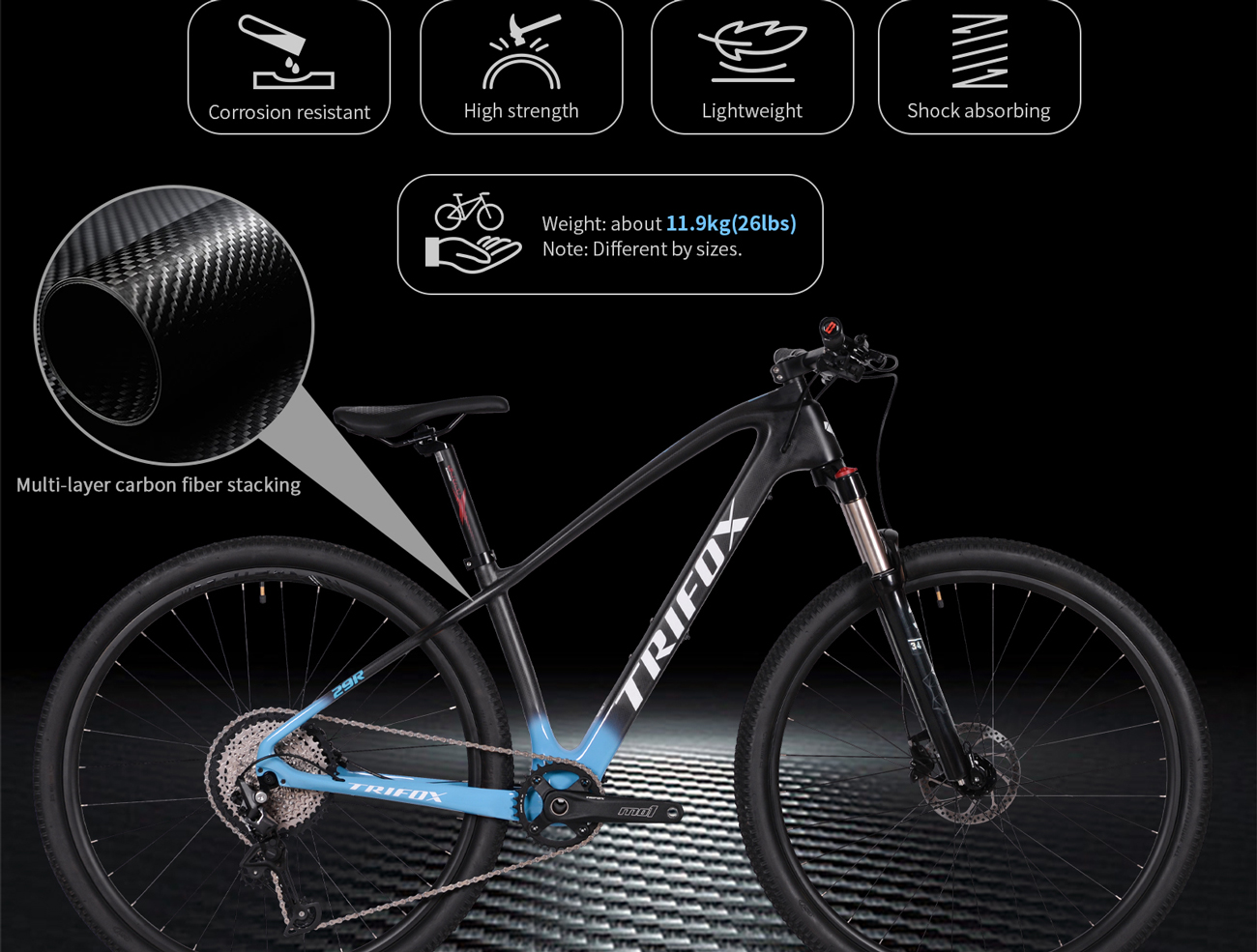
Verdict:
T800 carbon is a very good, high-performance material commonly found in quality mid-range to high-end road, gravel, and MTB frames. It offers a significant step up from basic T700 in terms of stiffness and efficiency without necessarily venturing into the ultra-stiff (and potentially less comfortable or more expensive) realm of top-tier moduli.

In an era dominated by plush suspension, choosing a rigid mountain bike seems counterintuitive, even masochistic. But hear us out! Ditching the squish unlocks a unique, rewarding experience that many riders crave. Here’s why rigid is rad:
Pure Connection & Skill Boost: Without suspension masking the trail, you feel everything. Every root, rock, and ripple buzzes through the bars. This forces you to read the terrain ahead, choose smoother lines, and actively use your arms and legs as suspension. It sharpens bike handling skills like nothing else, making you a smoother, more precise rider everywhere.
Simplicity & Reliability: No stanchions to service, no air springs to adjust, no dampers to bleed. Rigid forks and frames are virtually maintenance-free. Fewer moving parts mean fewer things to break, leak, or wear out. Just lube the chain and ride. It’s cycling distilled to its essence.
Weight Savings & Efficiency: Suspension forks add significant weight (often 1.5kg+). Rigid forks are featherweight. This translates directly to a lighter, more nimble bike, especially noticeable when climbing or accelerating. Every pedal stroke feels direct – no energy lost compressing suspension bob.
Cost-Effectiveness: Quality suspension forks are expensive. Rigid forks, especially steel or quality alloy, offer incredible performance per dollar. Building or converting to rigid can save significant cash upfront and long-term on maintenance.
The "Analog" Experience: Riding rigid is raw and visceral. It’s about flow over brute force, finesse over forgiveness. The satisfying buzz of tires on hardpack, the silent glide through the woods – it’s an unfiltered conversation with the trail. Many find it incredibly engaging and fun.
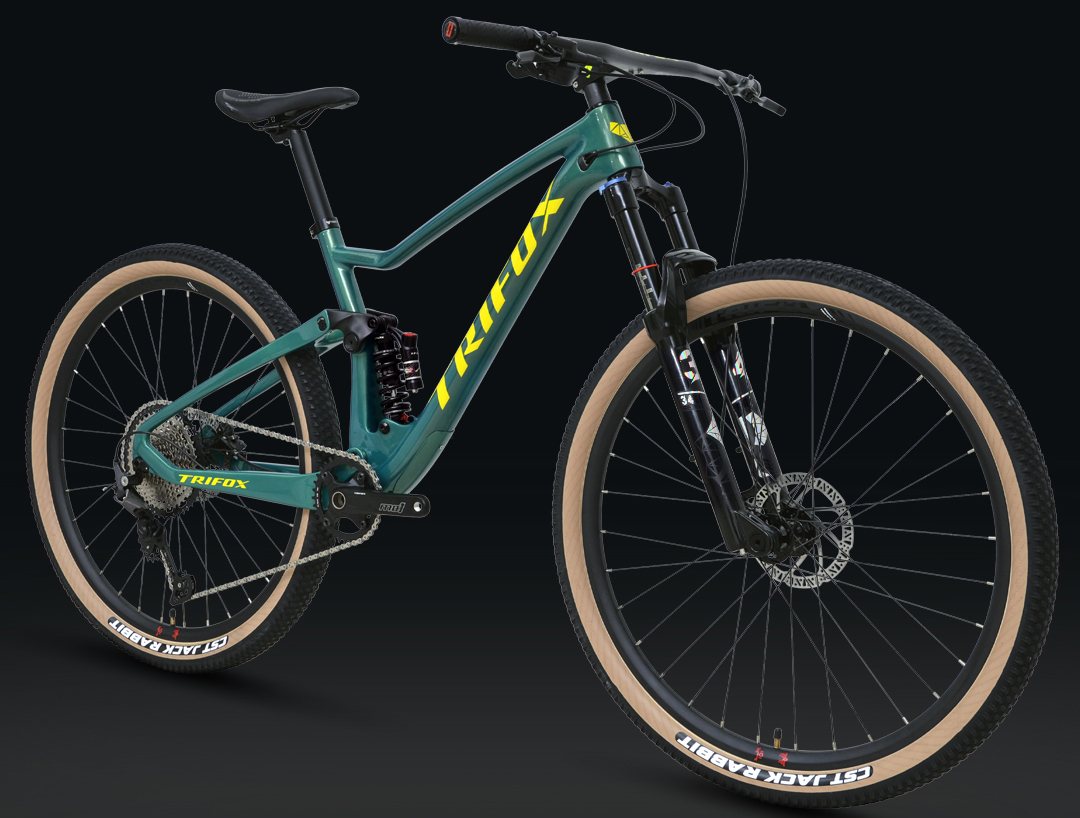
Is it for everyone? Honestly, no. Choppy, high-speed chunk will beat you up. But for flowing singletrack, gravel adventures, bikepacking, commuting, or simply honing your skills, rigid excels.
Ready to simplify? Check out lightweight, durable rigid forks at Trifox Bike. Rediscover the trail. Ride rigid!

























































